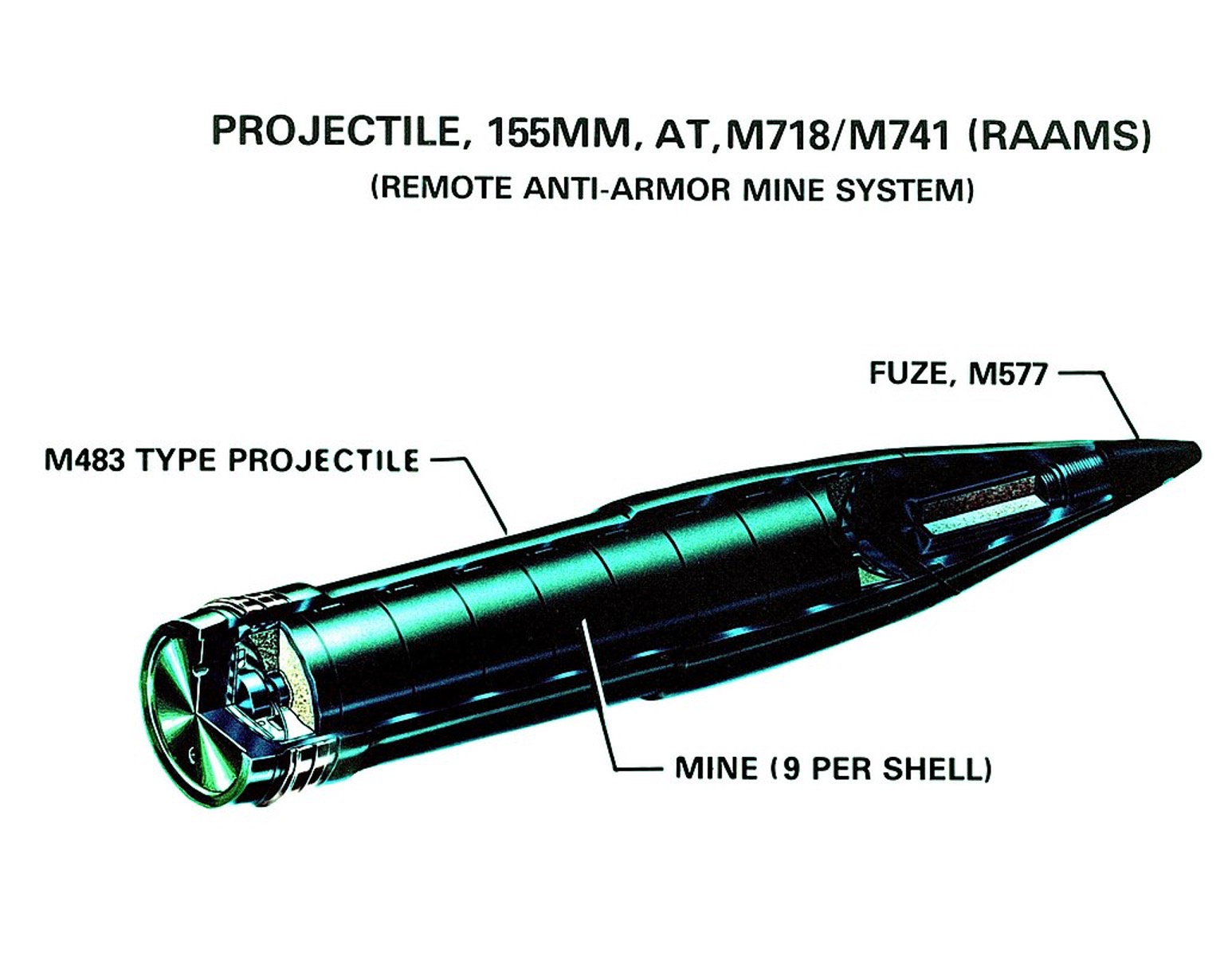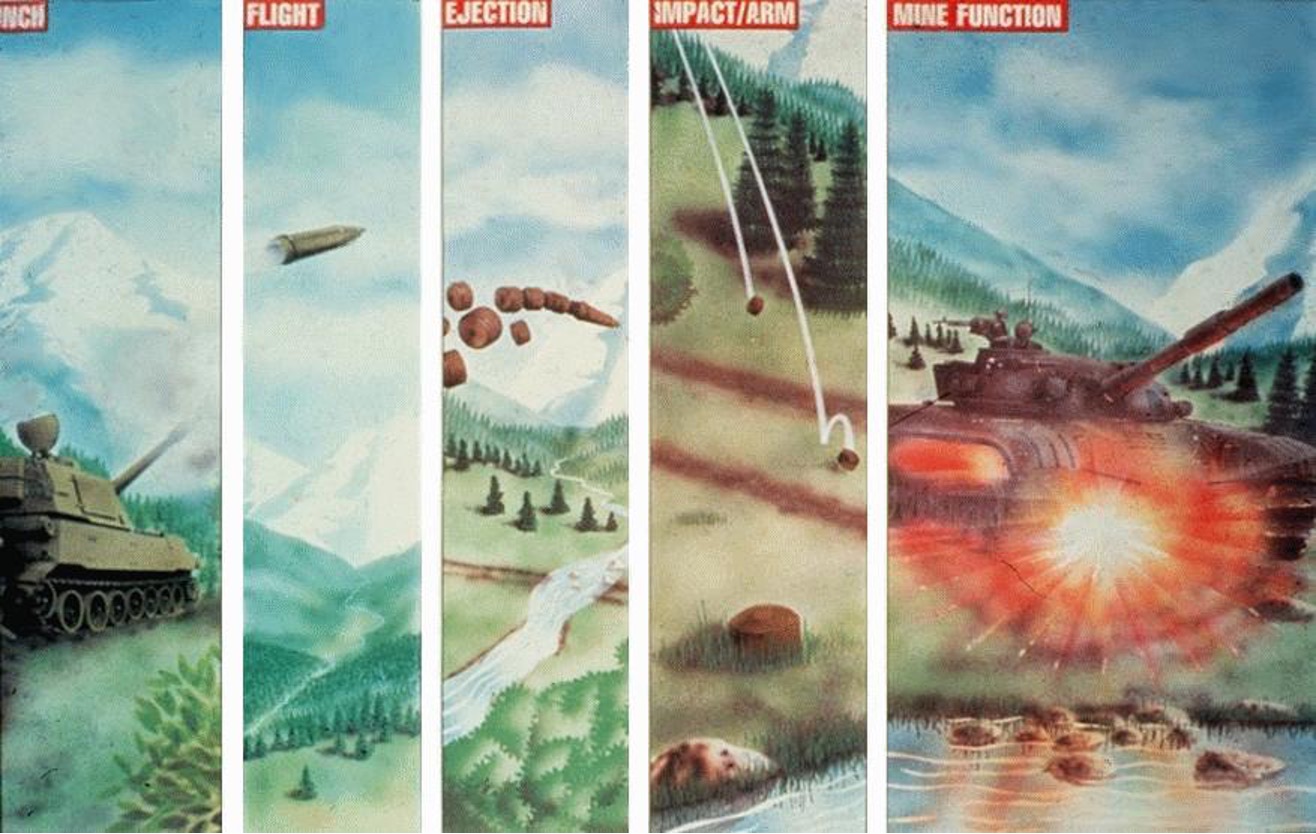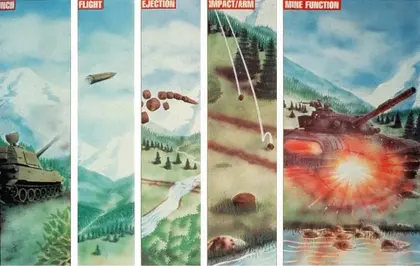A recent intelligence analysis by Britain’s Ministry of Defense said the Russian army has suffered heavy losses in tanks and other armored vehicles from Ukraine-fired “Remote Anti-Armour Mine systems (RAAM).”
A RAAM is an artillery shell which scatters anti-armor mines, in the hopes of the firer, in the path of enemy tanks and infantry fighting vehicles. It is, by definition, a cluster munition banned by the 2008 Convention of Cluster Munitions.
Neither Ukraine, nor Russia, nor the United States - highly-likely the manufacturer of the RAAM artillery shells that have devastated Russian tanks and infantry fighting vehicles particularly in recent battles in the Donbas sector - are signatories to that agreement.
In September 2002 Pentagon spokesmen announced Washington would send Kyiv 1,000 155-mm RAAM artillery shells. The caliber has been a NATO standard for more than a half century and the munition is fully usable by NATO nation-developed artillery pieces sent Ukraine, like the US M109 self-propelled howitzer, the British-designed M777 towed howitzer, or the France-developed Caesar wheeled howitzer.
The RAAM shell is designed to fly out to up to 17.6 kilometers’ max range and then and then scatter anti-armor mines onto a target area, rather than exploding. The technology was developed in the late Cold War by US arms manufacturers as a means of slowing down massed Red Army tank attacks, by seeding unexpected anti-armor minefields in their path.

EU Transfers €1.5 Bln Raised From Russian Assets for Ukraine

Cutaway view of a 155mm howitzer shell carrying nine air-delivered mines. Ukraine has received more than 10,000 of these munitions, according to the Pentagon. Open source image.
The shell most likely handed over by the Americans to the Ukrainians, judging by news reports and open source information on US military ammunition reserves, is the M718 RAAMS (the “S” on the end stands for “system”) munition. The shell contains nine mines, each about the size of a small, thick cheesecake, that once scattered land and arm themselves. The Pentagon has not been specific, but most likely, the Ukrainians received shells carrying mines that disarm themselves in 48 hours. The first reported use of the shells in Ukraine was in December 2022.
Containing an electromagnetic sensor, the 2.3 kg. mine detonates if something rolls over it or if a large metal object - like a tank - comes in close proximity. About half of the mine’s weight is an explosive charge fully capable of blowing the track off of any tank in the world or blasting a crippling hole through the thin belly protection of most armored vehicles. If the mine’s explosion sets off a fuel tank or ammunition bunker, even the heaviest tanks in the world can be blown to bits. As of January 1, according to US State Department statements, the Americans had handed over to the Ukrainians 10,200 155mm RAAMS shells.

Cold War-era depiction of how a RAAMS might work. This is a cluster munition banned by treaty, but Ukraine, Russia and the United States (among others) haven’t signed the UN-sponsored agreement.Open source image.
Although it wasn’t formerly announced by Ukraine’s Armed Forces (AFU), the first widespread use of RAAMS was likely in mid-February, when Russian forces in the Vuhledar sector attempted to break into Ukrainian fortifications using massed tanks including Russia’s top-of-the-lineT-90 tank, followed up by columns of elite Marine Infantry riding in armored personnel carriers.
The Kremlin offensive had been widely anticipated, and waiting Ukrainian gunners pounded the attacking columns with precise RAAM strikes controlled by overhead drones. Russian attacks ground to a halt in about ten days, following severe tank and infantry fighting vehicle losses. Some Ukrainian media confirmed AFU use of RAAMS shells in those battles and called Russia’s failure at Vuhledar a serious defeat.
You can also highlight the text and press Ctrl + Enter






